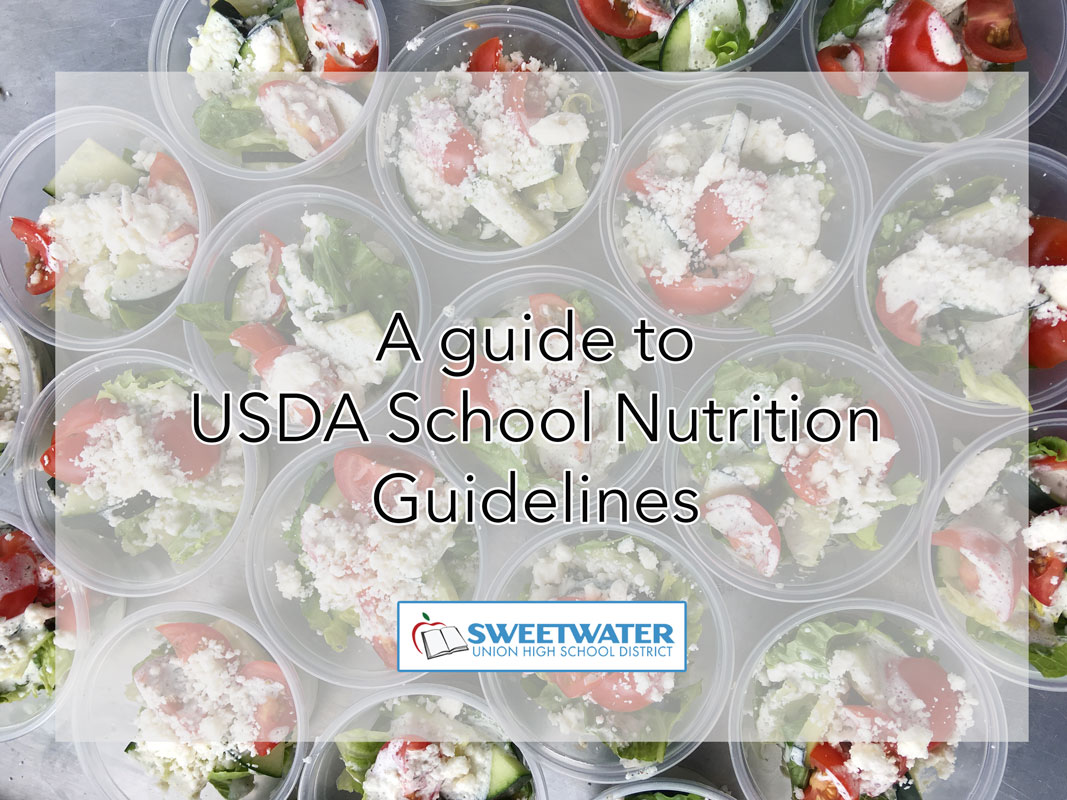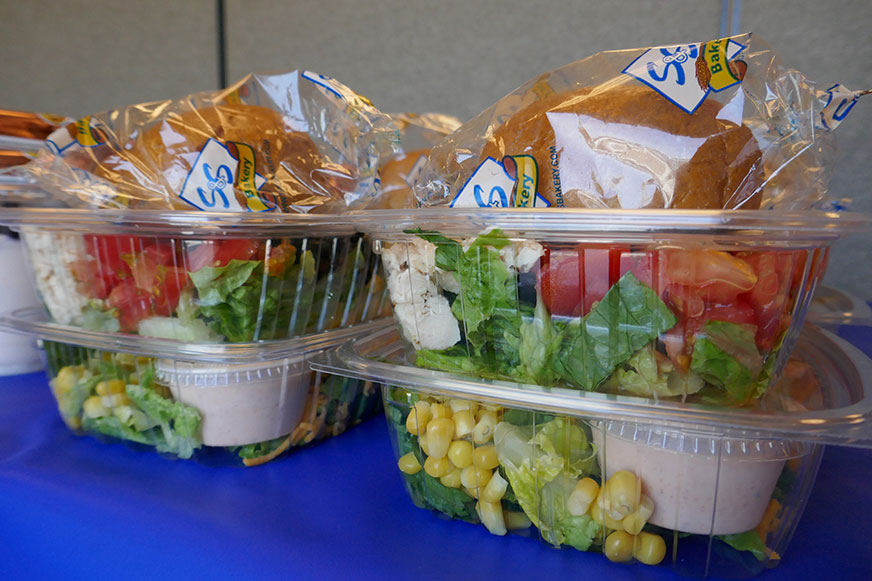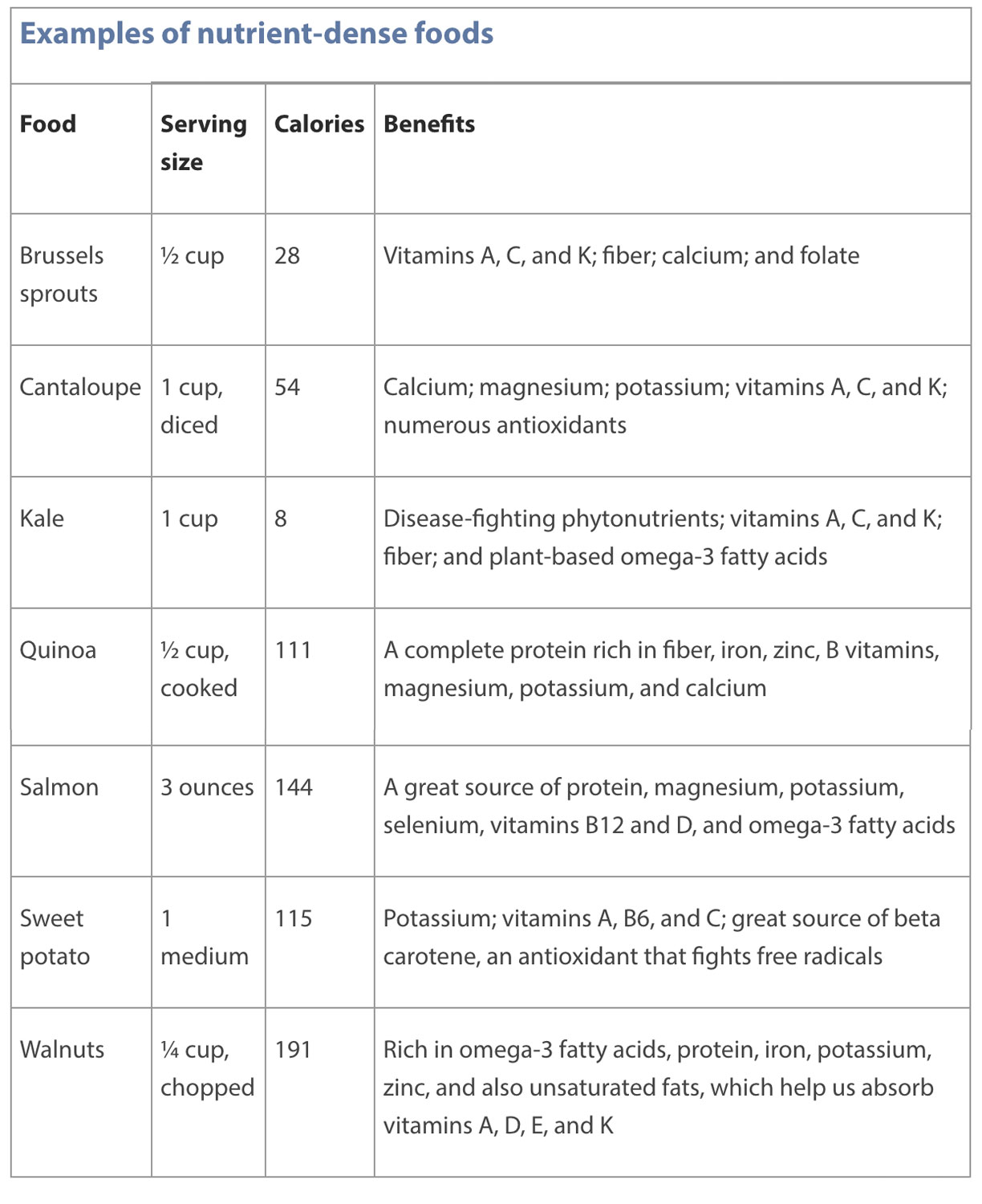You probably know that your school cafeteria has to follow USDA guidelines for child nutrition. But do you know what those guidelines are or how they impact your school lunch choices?
A recent history of federal nutrition guidelines
The United States federal government has had guidelines for school nutrition programs since the 1930s. There have been many changes over the years, with the most important being the passing of the National School Lunch Act in 1946. This ensured schools would serve meals that meet the minimum nutrition requirements for children for free or at a low cost to those unable to pay. In 1966, the Child Nutrition Act was passed, recognizing the link between food and good nutrition and the ability for children to learn. To celebrate school nutrition, National School Lunch Week was established in 1962, and National School Breakfast Week was established in 1989.
The USDA most recently updated the guidelines for the National School Lunch and School Breakfast Programs in 2012. The new guidelines were meant to reduce childhood obesity and increase the availability of fresh foods to low-income children. The guidelines increased fruits, vegetables, whole grains, and low-fat dairy, and decreased sodium, saturated fat, and trans fat in school meals. Schools are encouraged to provide nutrient-dense foods, which are foods that are high in nutrients and a low in calories. These foods have plenty of vitamins, minerals, fiber, protein, and good fats in a low-calorie package.
Current USDA guidelines for school lunches
The USDA has nutritional guidelines for all Americans, but schools participating in the National School Lunch Program and School Breakfast Program have special guidelines. This is because it’s important for students to get proper nutrition so they can do well in school and become future leaders. Plus, some students qualify for free or reduced price meals, and the USDA wants to ensure that all students have access to healthy foods to grow and learn.
Here are the USDA guidelines for school lunches.
School food requirements:
- Offer fruits and vegetables as two separate meal components
- Offer fruit daily at breakfast and lunch
- Offer vegetables daily at lunch, including specific vegetable subgroups weekly (dark green, orange, legumes) and a limited quantity of starchy vegetables (potatoes)
- Half of the grains need to be whole grains
- Offer a daily meat/meat alternate (eggs, nuts, seeds, soy) at breakfast
- Offer fat-free (unflavored and flavored) and low-fat (unflavored only) milk
School meal program requirements:
- Meals need to meet specific calorie ranges for each age/grade group
- Reduce sodium gradually over a 10-year period
- Prepare meals using ingredients that contain zero grams of trans fat per serving
- Require students to select a fruit or a vegetable as part of the reimbursable meal
- Use a single food-based menu planning approach
- Use narrower age/grade groups for menu planning
- Conduct a nutritional review of school lunches and breakfasts as part of the administrative review process
Schools also follow guidelines for calorie requirements for school meals based on grade. School breakfast and lunch menus can measure the average number of calories by the week, rather than by the day, for more flexibility and to ensure greater nutritional accountability for students who eat at school every day. These grade-based calorie ranges also ensure each student gets enough to eat to support a day of learning.
Is it healthy to eat a school lunch?
Yes! Schools follow the USDA guidelines to ensure each meal includes fruit, vegetables, protein, whole grains, and dairy. Schools are even able to incorporate kid favorites like hamburgers and pizza into a nutritionally balanced meal when serving sizes are controlled and the meal is paired with fresh fruits and vegetables. Some foods often also have modifications to make them more nutritious, such as a whole wheat pizza dough and buns and low-fat cheese.

Fresh grilled lean meats can be part of a balanced school lunch when prepared with low-sugar sauces and paired with fresh fruits and vegetables. Plus, students love food from the grill!
Of course, student choice plays a large role in the nutrition value of school meals. For example, a slice of pizza with a serving of juice is not as nutritious as a slice of pizza, a side salad, an orange, and milk. We encourage families to discuss nutrition at home (perhaps over a family dinner) to help students learn to make nutritionally smart choices in the school cafeteria. There’s a place for foods like pizza, hamburgers, and even desserts, but moderation is important. Additionally, when students are able to make their own choices they tend to feel in control and experience greater satisfaction about their food. This also helps reduce food waste and increase consumption of nutritious foods.
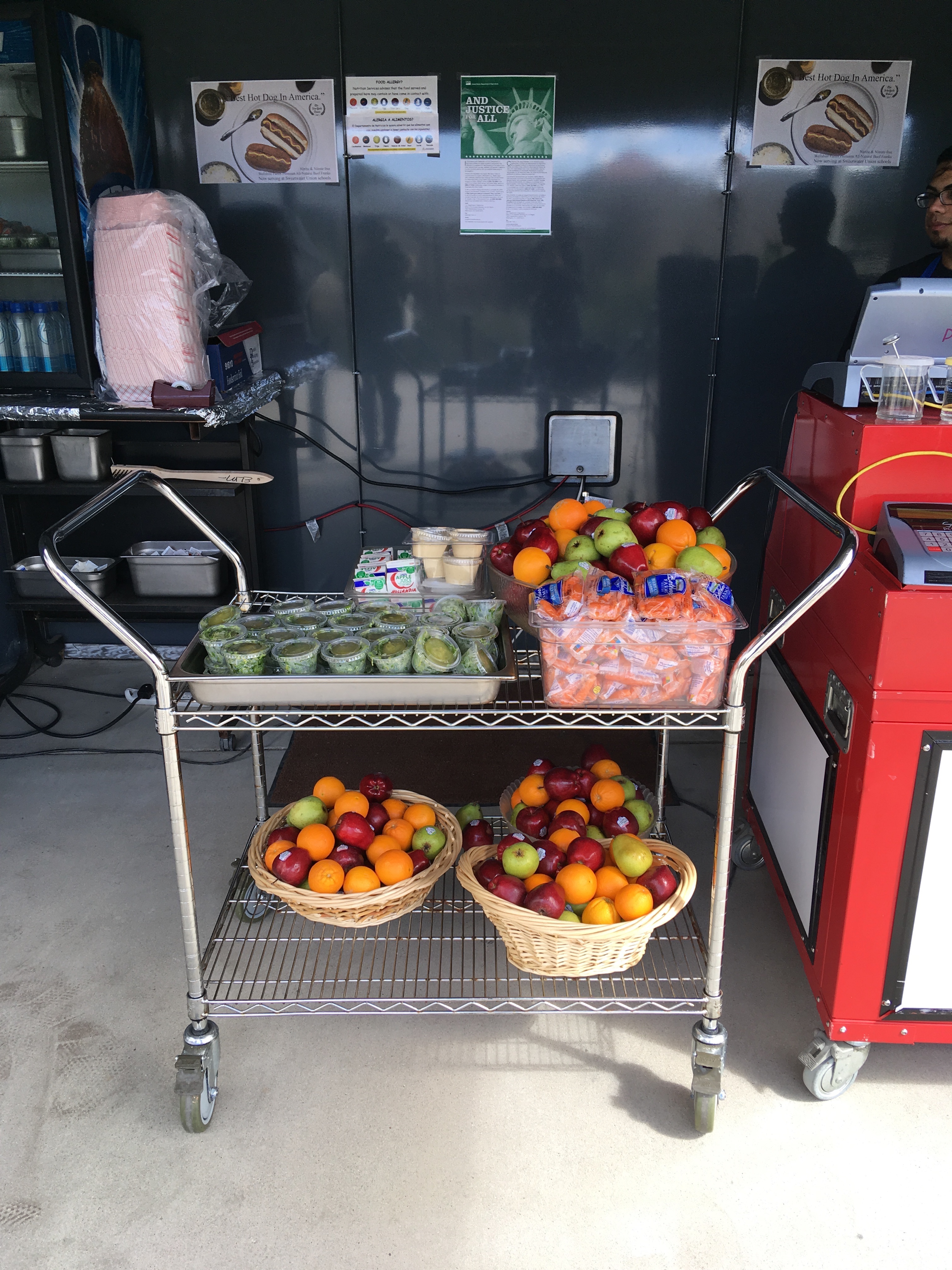
Students can choose from a variety of whole fruits, baby carrots and hummus, and vegetables for their side.
What is a healthy eating pattern?
Most of us don’t eat enough fruits, vegetables, dairy, or healthy oils, and get more grain and protein (up to twice as much!) than we need. Added to this, most Americans, including children and teens, eat too much added sugar, saturated fat, and sodium, and too many calories overall. These habits can lead to a number of chronic diseases (such as heart disease, type 2 diabetes, and obesity) that shorten life spans. Everyone, especially growing students, should do their best to follow a healthy eating pattern.
A healthy eating pattern includes:
- A variety of vegetables from all of the subgroups: dark green, red and orange, legumes (beans and peas), starchy, and other
- Fruits, especially whole fruits
- Grains, at least half of which are whole grains
- Fat-free or low-fat dairy, including milk, yogurt, cheese, and/or fortified soy beverages
- A variety of protein foods, including seafood, lean meats and poultry, eggs, legumes (beans and peas), and nuts, seeds, and soy products
- Oils
A healthy eating pattern limits:
- Saturated and trans fats
- Added sugars
- Sodium
A healthy eating pattern can be achieved by eating more variety, both in each food group and among all food groups. For example, students can fill up on the fresh salad bar to get their recommended fruits and vegetables and try something new. At home, replace a hamburger a couple times a week with a bean or seafood dish and add a colorful salad to dinner. This helps you add more nutrient dense foods that keep you full and provide all the nutrients you need while still tasting great. The best part is you don’t have to stop eating your favorite unhealthy foods – just eat them less frequently, or have smaller portions and fill up with a nutrient-dense salad or vegetable side dish.
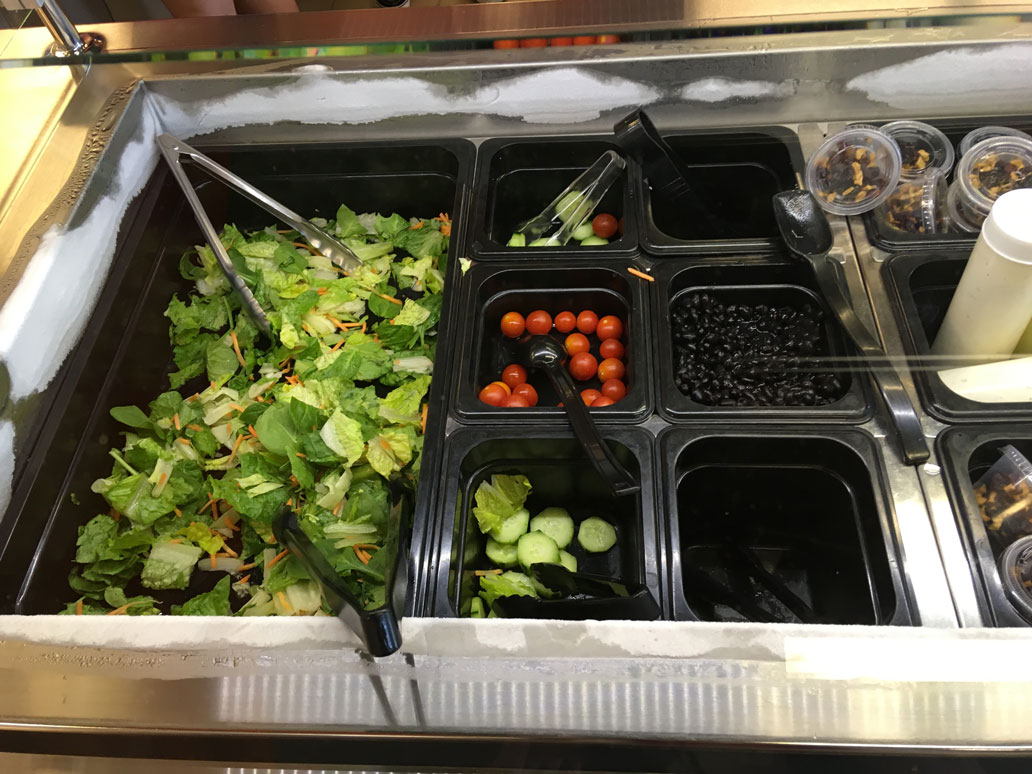
A fresh salad bar with vegetables and beans gives students the option to build their own healthy meals.
It’s also good to remember that taste buds change, so just because you didn’t like a fruit or vegetable when you were younger doesn’t mean you won’t like it now. Preparing a fruit or vegetable in a new and interesting way can greatly improve its taste. For example, many people don’t like cruciferous vegetables like broccoli or Brussels sprouts when they’re young, but learn to love it by trying a new preparation with an open mind. Next time you go through the school salad bar, try adding chickpeas, bell peppers, or purple cabbage and see how your taste buds may have grown.

